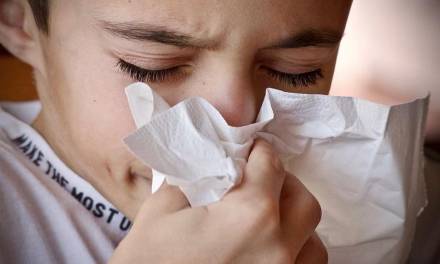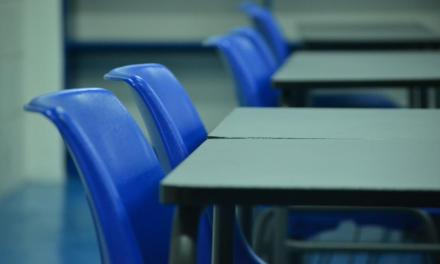The coronavirus is dominating news headlines around the world. In China alone more than 2,600 people have died, more than 30 countries have reported cases and cities in northern Italy are now in lockdown, as the crisis hit Europe this week.
As a result, Britain is finalising contingency plans. As well as warning Britons against travelling to certain places. Ministers have also announced plans to test 600 people per week.
But should the education sector be preparing and adapting? What has happened already in UK schools and around the world? This blog post explains all you need to know about the coronavirus in schools.
What is coronavirus?
According to the Washington State Department of Health:
Coronavirus are a large family of viruses that usually cause mild respiratory illnesses such as the common cold. Some coronavirus have caused more severe illness, such as Severe Acute Respiratory Syndrome (SARS) and Middle East Respiratory Syndrome (MERS). Covid-19 is a disease caused by a new coronavirus that was not identified in humans before December 2019.
How dangerous is coronavirus?
In Wuhan, the epicentre of the Covid-19 outbreak, the current death rate is between 2-4%. The British Government is preparing for a ‘worst case scenario’ if the death rate is 2.5%. This would be the same as the Spanish Flu outbreak in 1918. This was the worst in modern history and killed 40-50 million people worldwide.
In terms of the Spanish Flu pandemic, there was information to find not only decreased health in adulthood, but also ‘lower educational attainment, income, and socioeconomic status‘. There is robust evidence that ‘utero exposure to the pandemic reduced high school graduation rates’.
Coronavirus is more likely to kill the elderly or those with underlying health conditions, however the number of healthy young people killed has concerned doctors. In the majority of cases, the disease is only mild but pneumonia can develop in the most severe cases.
What is the difference between a pandemic and an epidemic?
There is some debate as to whether the coronavirus is an epidemic or a pandemic. The World Health Organisation (WHO) is yet to consider it a pandemic. Director General Tedros Adganom Ghebreysus said:
Our decision about whether to use the word ‘pandemic’ to describe an epidemic is based on ongoing assessment of the geographical spread of the virus, the severity of disease it causes and the impact on the whole society.
The US Centres for Disease Control and Prevention explains an epidemic refers to an often sudden increase in the number of cases of a disease, above what is normally expected in the population of that area. A pandemic refers to an apidemic which has spread over multiple countries and continents, affecting an extremely large number of people.
Dr Mike Ryan, WHO’s Executive Director of Health Emergencies Programme, said:
What we don’t understand yet in Covid-19 are the absolute transmission dynamics. So we’re in a phase of preparedness for a potential pandemic.
What does the coronavirus mean for schools?
The Centres for Disease Control has said that schools need to prepare for a nationwide surge in cases of the coronavirus.
You should ask your children’s school about their plans for school dismissals or school closures. Ask about plans for teleschool.
In the United States, schools are sending letters home to parents urging frequent hand-washing and keeping sick children home from school until they’re without fever for 24 hours without medication. School trips to China have also been suspended.
Should schools in the UK close as a result of coronavirus?
England’s chief medical officer, Professor Chris Whitty, said:
There’s a variety of things you need to look at, you look at things like school closures, you look at things like reducing transport.
The expectation is not that we will do all these things, the expectation is we will be looking systematically, using the science, at all the building blocks and balancing the effects against the costs to society.
These measures are likely to be a last resort – with the ultimate decision being left to headteachers. Schools are often seen as the social hub of the community which can contribute to a potential spread of the infection to a wider area.
This advice is likely based on the Influenza Pandemic Strategy 2011, which states that public gatherings are unlikely to be banned, as it helps to maintain calm during the pandemic.
The report states:
The impact of closure of schools and similar settings on all sectors would have substantial economic and social consequences, and have a disproportionately large effect effect on health and social care because of the demographic profile of those employed in these sectors. Such a step would therefore only be taken in an influenza pandemic with a very high impact and so, although school closures cannot be ruled out, it should not be the primary focus of schools’ planning.
How are schools reacting to the coronavirus?
A school in Carlisle is allowing pupils to work from home because of fears about the spread of the virus. Although teenagers at Austin Friars School did not visit the region at the centre of the outbreak, the school said it was aware of the concern of parents following a skiing trip to northern Italy.
Headteacher Matthew Harris said:
The safety of staff and pupils is naturally of paramount importance to the school and we are following developments very closely, drawing not only on advice from Public Health England and the NHS but the Department for Education, Independent Schools’ organisations and local authorities.
We recognise that parents may wish to exercise parental choice and determine their own approach; having taken into account their perception of the risk, their personal circumstances and the impact of two weeks absence from school. The school will not oppose such a decision and it will be regarded as an authorised absence.
In Northern Ireland, pupils at three schools have been sent home due to coronavirus concerns. Cambridge House Grammar in Ballymena has sent pupils home for 14 days. Students had also recently returned from Italy. The Public Health Agency said only those who had been to a quarantined town in Italy must self-isolate.
Four schools in England have completely shut for a “deep clean” linked to the virus. You can read more about school closures here.
What can be done to prevent the spread of coronavirus?
Although there is no vaccine available to prevent infection with the new coronavirus, you can take steps to reduce your risk of infection:
- Wash your hands often with soap and water, or use an alcohol-based hand sanitizer.
- Cover your moth and nose with your elbow or tissue when you cough or sneeze.
- Avoid touching your eyes, nose and mouth if your hands aren’t clean.
- Avoid close contact with anyone who is sick.
- Avoid sharing dishes, glasses, bedding and other household items if you’re sick.
- Clean and disinfect surfaces you often touch.
- Stay home from work, school and public areas if you’re sick.
The World Health Organisation (WHO) recommends you contact your doctor if you have a fever, cough or difficulty breathing. You should avoid eating raw or undercooked meat or animal organs.
How can online learning be used in the event of the coronavirus?
In Indiana, schools got an early preview of how the district would respond to widespread infection. An outbreak of flu sent absentee rates in district and high schools above 20% prior to a shut down at the end of January.
The district had previously been deploying e-learning in the event of bad weather and Curtis Craig, superintendent of schools, said the biggest key to success in unexpected e-learning situations is to have adequately prepared students and teachers prior to the emergency.
If you can run the kids through some online practice while they’re here at school, it’s much, much better. If online isn’t completely different than what they’re doing in school, that’s even better. If the kids are used to going to a student management system to go online to submit their assignment, submitting their assignments online, then it’s not a completely different experience for them.
In China, parents and schools are too turning to online education. China has launched a national cloud learning platform and started broadcasting primary school classes to ensure the country’s 180 million students can maintain education even though schools are closed. Primary school classes are being broadcast on one of China’s state TV channels.
How can EDLounge help?
EDLounge Limited is an online training and education platform, which means that students can continue learning even when not in mainstream education. It means pupils can continue learning, without the risk of infection from other pupils.
EDClass+ offers 11,000 lessons, live teaching and support. The eyes-on learning function is also ideal for vulnerable students. For a list of the types of students that may have the greatest benefit of online learning, click here.
EDLounge has been inspected by Ofsted. To view the report, click here.









